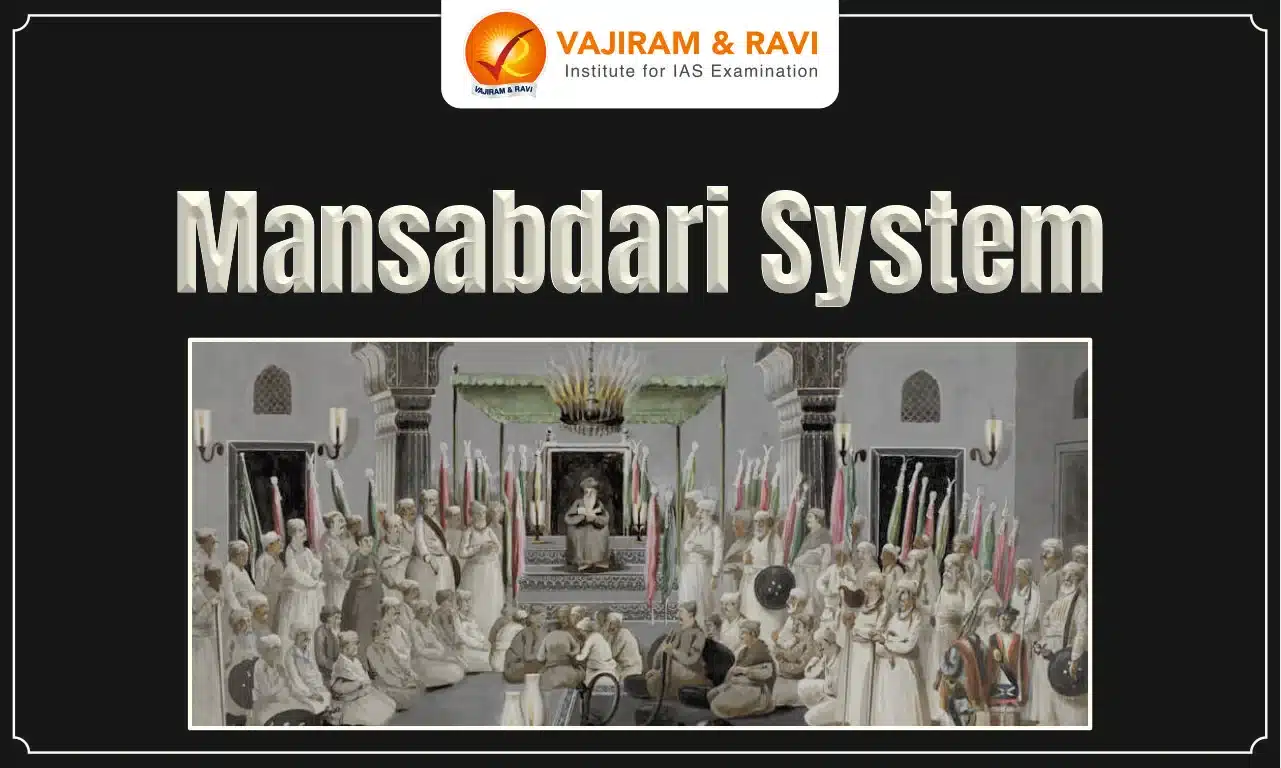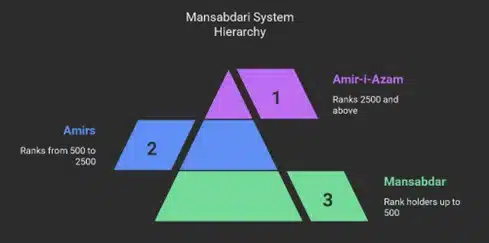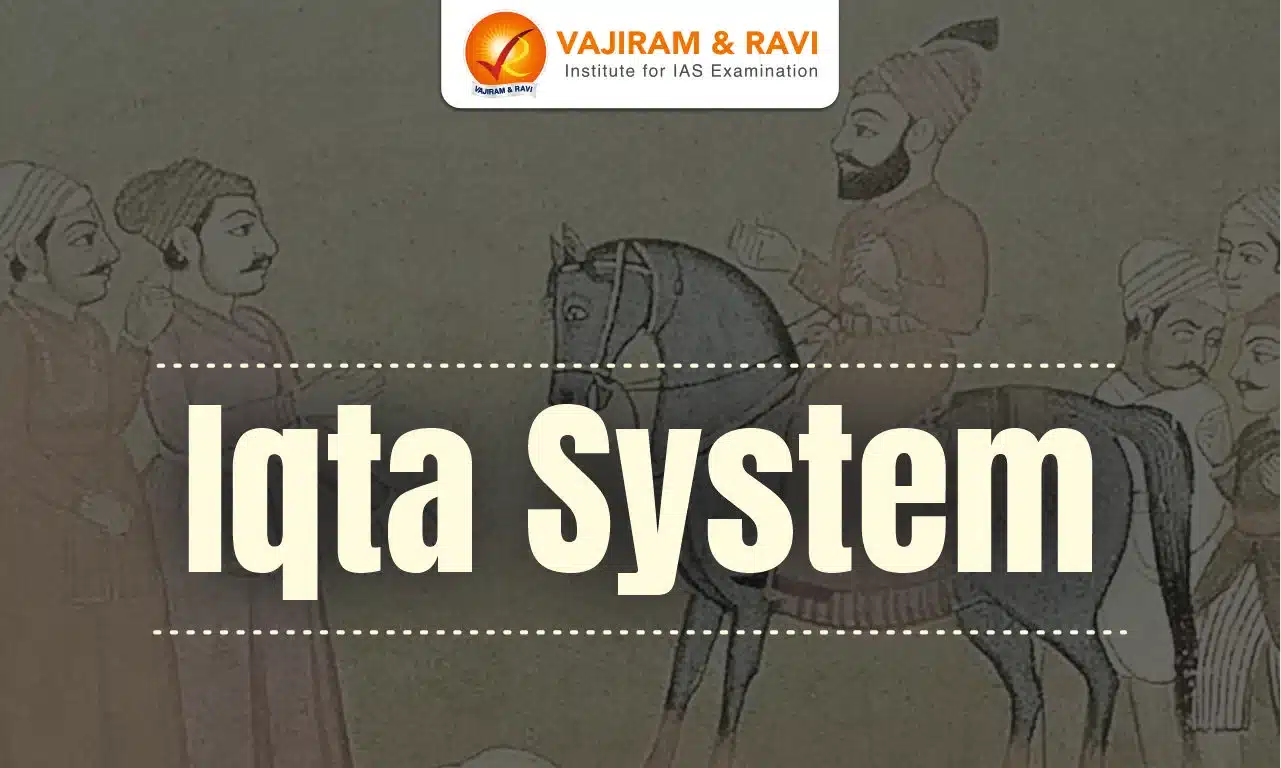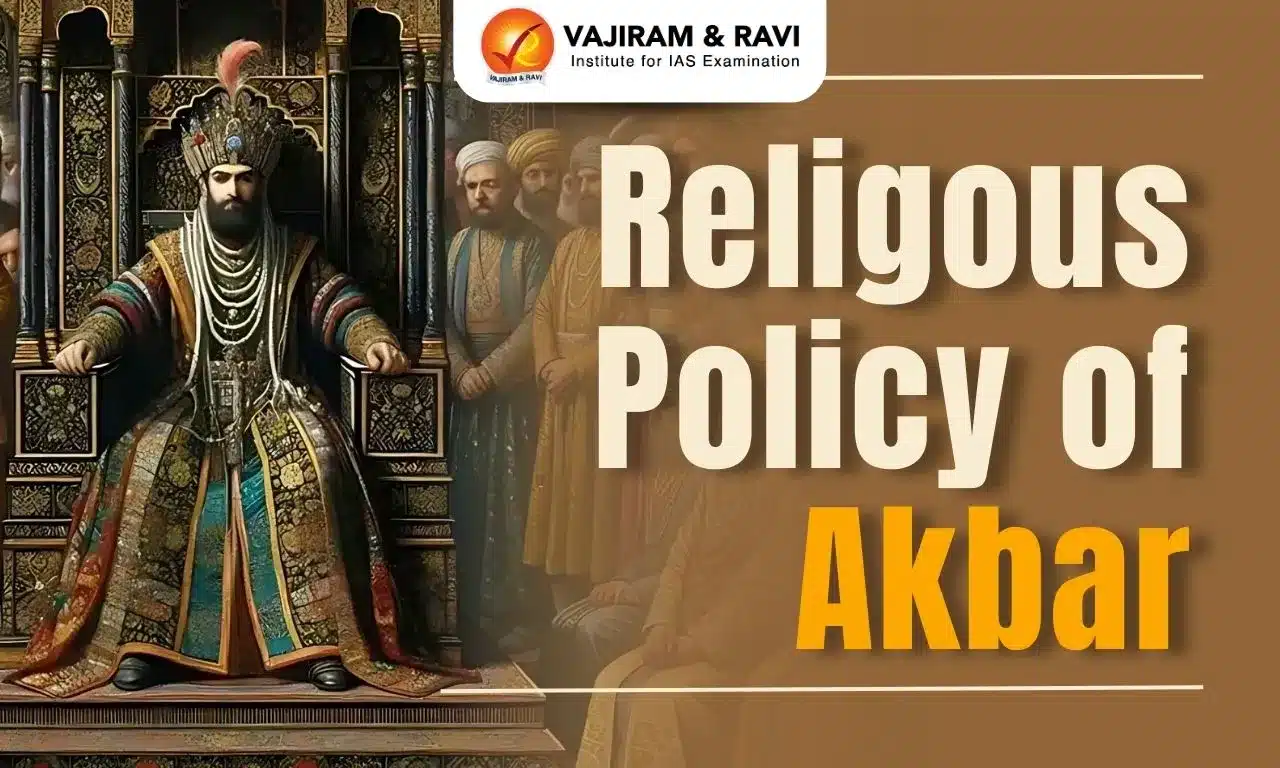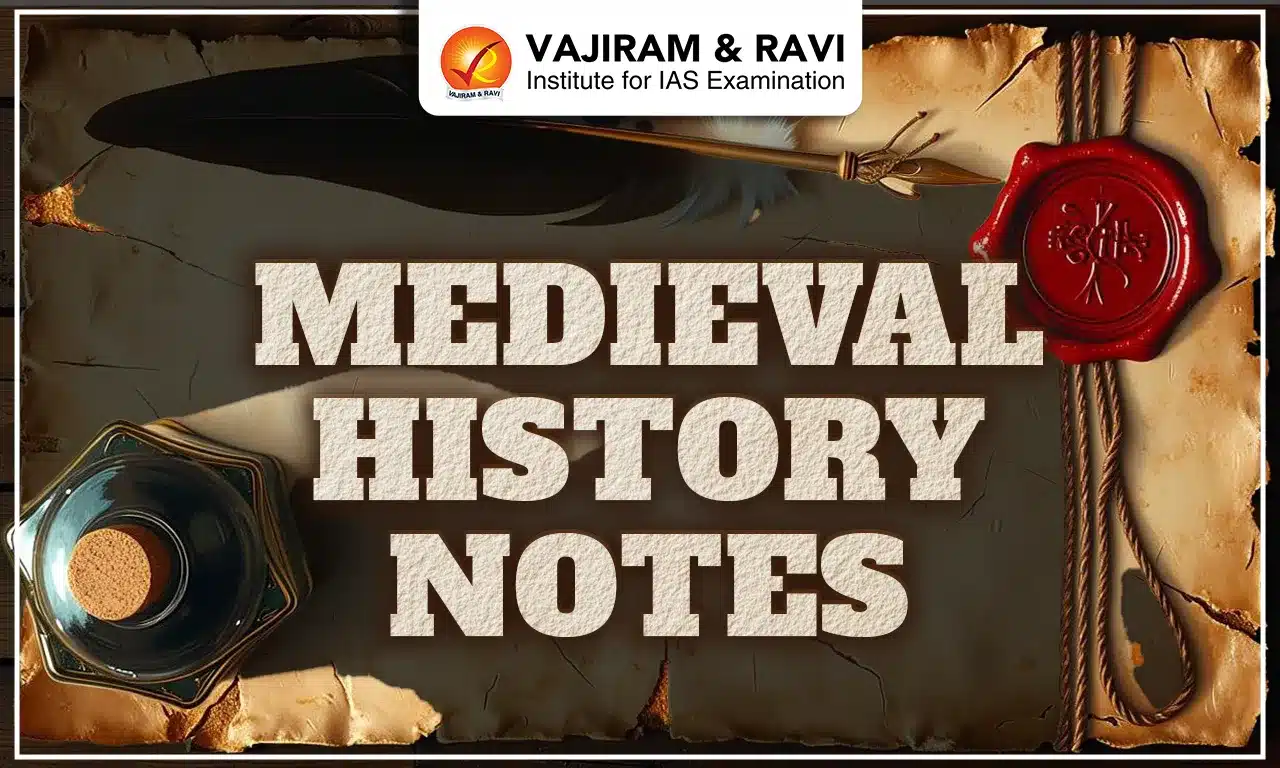Mansabdari System was a unique system developed by the Mughals in India. Mansabdari System was a grading system that determined an individual's rank or status based on their position in the official hierarchy and salary. The Mansabdari System was modified by Akbar in 1567, during his eleventh year of reign, to serve as the foundation for both civil and military administrations during the Mughal era. The word Mansab is of Arabic origin, meaning rank or position. Hence, Mansabdar means holder of a rank.
Mansabdari system designated ranks for the officials, determined their status in the official hierarchy, determined the pay of the holder, and maintained a specified number of contingents with horses, horsemen, and equipment. It served as the backbone of the Mughal Empire.
Mansabdari System Origin
Mansabdari system was of Central Asian origin, based on the Mongolian Military system. It can be traced back to Changez Khan, who structured his army on a decimal basis, with the lowest unit of command being ten and the highest being ten thousand (toman), whose commander was called Khan.
- Expansion using Mansabdari: Akbar expanded and safeguarded his empire through the Mansabdari system by efficiently organizing the nobility and maintaining a strong army.
- Innovation by Akbar: During 1595-96, Akbar introduced a new concept in the Mansabdari system, where the rank of a mansabdar became denoted by dual ranks, Zat and Sawar, instead of one number.
Mansabdari System Nature and Structure
Mansabdari system was highly structured, categorizing mansabdars based on their ranks. Each mansab had a specific number of troops and responsibilities. In the Mansabdari System Akbar established 66 grades corresponding to the command of ten (deshbhasi) to the commander of ten thousand (dahhazar), but in practice, as mentioned by Abul Fazl, there were 33 grades of mansabdars. The nature and structure are discussed in detail below:
- Components of Mansab: Mansab denoted three things, i.e. determining the status of its holder (the mansabdar) in the official hierarchy, fixing the holder's pay, and requiring the holder to maintain a specified number of contingents with horses, horsemen, and equipment.

- Allocation of Mansab: Akbar divided services from 10 to 5000 into the formally recognized hierarchy of grades. By the end of Akbar's reign, mansab had increased to 7000. Rajput kings and princes who recognized Akbar’s suzerainty, such as Raja Man Singh, were given higher mansab.
- Hierarchy of Mansabs: Mansabdari System had the following hierarchy:-
- Mansabdar: Rank holders up to 500
- Amir: Rank holders from 500 to 2500
- Amir-i-umda, or Amir-i-azam: Rank holders from 2500 and above
- Later, all those below 1000 were called mansabdars.
- Ranking of officers: A mansab was issued to each civil and military officer, and different numbers, which could be divided by ten, were used for ranking officers.
- Compensation: Mansabdars were compensated in two ways, either with cash (naqd) or by receiving land assignments (jagir).
- Division of Ranks: The mansab rank was divided into two, i.e. Zat, a personal rank indicating his rank and pay, and Sawar rank, which stated the number of horsemen the noble had to maintain.
Concept of Zat and Sawar Rank
The dual rank system, the Zat and Sawar system, was introduced in 1595-96 by Akbar. Abul Fazl mentioned in his official report that this arrangement classified the mansabdars into three groups.
- First Group: The first group consisted of people who kept the number of Sawar equal to their mansab.
- Second Group: The second group retained half or more than half of the Sawar but less than equal to their mansab rank.
- Third Group: The third group included those who kept Sawar less than half their mansab rank.
The Sawar mansab would only outnumber the Zat mansab in exceptional situations, such as an act of war or foreign invasion. The Zat rank also denoted the number of horses, elephants, beasts of burden, and carts a mansabdar was supposed to maintain. The quality of horses and elephants was well-defined. A mansabdar of 4000 Zat maintaining 2000 Sawar was higher than a mansabdar of 3000 Zat and 3000 Sawar.
Mansabdar Appointment
The ruler appointed Mansabdars on the advice of Mir Bakshi. However, if the mansabdar received a promotion, his pay would increase based on the number of Zat. Demotion was based on non-performance, but it was generally not practiced. Akbar started the rule of the Dahbisti system, in which the mansabdar was required to maintain twenty horses for every ten cavalrymen, as horses needed rest during marches and replacement during wartime. However, the Mansabdari system was not hereditary.
Manasabdari System under Successive Rulers
Mansabdari system, established by Akbar, played a critical role in shaping the military and administrative framework of the Mughal Empire. Jahangir and Shah Jahan recognized the system's limitations and inefficiencies and implemented substantial reforms to address these issues and combat corruption.
- Changes introduced by Jahangir: He introduced the Du-Aspah Sih-Aspah System, in which only selected nobles could maintain double or triple the number of soldiers without changing their Zat rank.
- This allowed him to maintain a larger number of soldiers without incurring additional costs.
- Changes introduced by Shah Jahan: He introduced the Month ratio or Month scale system, in which the salaries of Mansabdars were based on a month scale of ten months, eight months, six months, or even less.
- The number of sawars maintained by mansabdars was reduced without changing their rank.
Mansabdari System Merits
Mansabdari System had several merits which including the promotion of uniformity in administration, reducing caste based discrimination, curbing the power of the feudal class, promoting merit-based promotion, etc. The merits are as follows:
- Promoted Uniformity in Administration: It introduced the Uniformity Concept, promoting political unity and reducing the influence of nobles and feudal classes.
- Reduced Caste based Discrimination: The system weakened the caste and feudal system by making it mandatory for mansabdars to appoint soldiers from all castes and religions.
- Curbed power of Feudal Class: The Mansabdari system effectively reduced the power of the feudal and nobility classes, recognizing them as administrative classes with fixed service conditions rather than being part of the nobility class.
- Merit Orientation: The Mansabdari system also recognized merit. Akbar implemented strict measures to prevent dynastic influences.
- Strengthened Mughal Rule: The Mansabdari system strengthened the ruler's authority and solidified the monarchical type of government, transitioning the Mughal state to a more rigorous administrative structure under Akbar's reign.
Mansabdari System Demerits
The Mansabdari system helped consolidate the Mughal rule, but the system had inherent weaknesses. The demerits of the system include rampant corruption, undue influence by mansabdars, lack of loyalty, hindrance to military efficiency, etc.
- Rampant Corruption: Mansabdars cheated the government by bringing street-based men in military uniform and presenting them as soldiers. Akbar's ability as administrator and disciplinarian helped stamp out corruption, but it took years due to less vigilance and discipline.
- Undue Influence of Mansabdars: The Mughal Empire faced a lack of strong successors, giving mansabdars immense power and allowing them to enter political affairs.
- This weakness occurred after Aurangzeb's death, as each mansabdar sought their interests, making maintaining a balanced and uniform administration difficult.
- Lack of Loyalty: The Mansabdari system lacked a cohesive force necessary for a national army. The troops' loyalty was with the mansabdars rather than the emperor, who paid them.
- Pomp and Show: The mansabdars' tendency for pomp and display hindered military efficiency.
- Exploitation of Citizens: The system was also susceptible to corruption as mansabdars had the power to collect revenue, which led to the exploitation of common people.
Mansabdari system, despite its flaws, played a crucial role in the Mughal military establishment. However, it required proper guidance and was only effective till Aurangzeb's reign. The system eventually became weak and led to the Mughal Empire's fragmentation. Despite its shortcomings, it had advantages, such as its diplomatic use against rival Rajput chiefs and its ability to ensure loyalty to the emperor.
Last updated on December, 2025
→ Check out the latest UPSC Syllabus 2026 here.
→ Join Vajiram & Ravi’s Interview Guidance Programme for expert help to crack your final UPSC stage.
→ UPSC Mains Result 2025 is now out.
→ UPSC Notification 2026 is scheduled to be released on January 14, 2026.
→ UPSC Calendar 2026 is released on 15th May, 2025.
→ The UPSC Vacancy 2025 were released 1129, out of which 979 were for UPSC CSE and remaining 150 are for UPSC IFoS.
→ UPSC Prelims 2026 will be conducted on 24th May, 2026 & UPSC Mains 2026 will be conducted on 21st August 2026.
→ The UPSC Selection Process is of 3 stages-Prelims, Mains and Interview.
→ UPSC Result 2024 is released with latest UPSC Marksheet 2024. Check Now!
→ UPSC Prelims Result 2025 is out now for the CSE held on 25 May 2025.
→ UPSC Toppers List 2024 is released now. Shakti Dubey is UPSC AIR 1 2024 Topper.
→ UPSC Prelims Question Paper 2025 and Unofficial Prelims Answer Key 2025 are available now.
→ UPSC Mains Question Paper 2025 is out for Essay, GS 1, 2, 3 & GS 4.
→ UPSC Mains Indian Language Question Paper 2025 is now out.
→ UPSC Mains Optional Question Paper 2025 is now out.
→ Also check Best IAS Coaching in Delhi
Mansabdari System FAQs
Q1. What is the Mansabdari System?+
Q2. Was the Mansabdari system hereditary or not?+
Q3. How did the Mansabdari system fail? +
Q4. Who introduced the Mansabdari system?+
Q5. What were the demerits of the Mansabdari system?+
Tags: quest UPSC Medieval History



